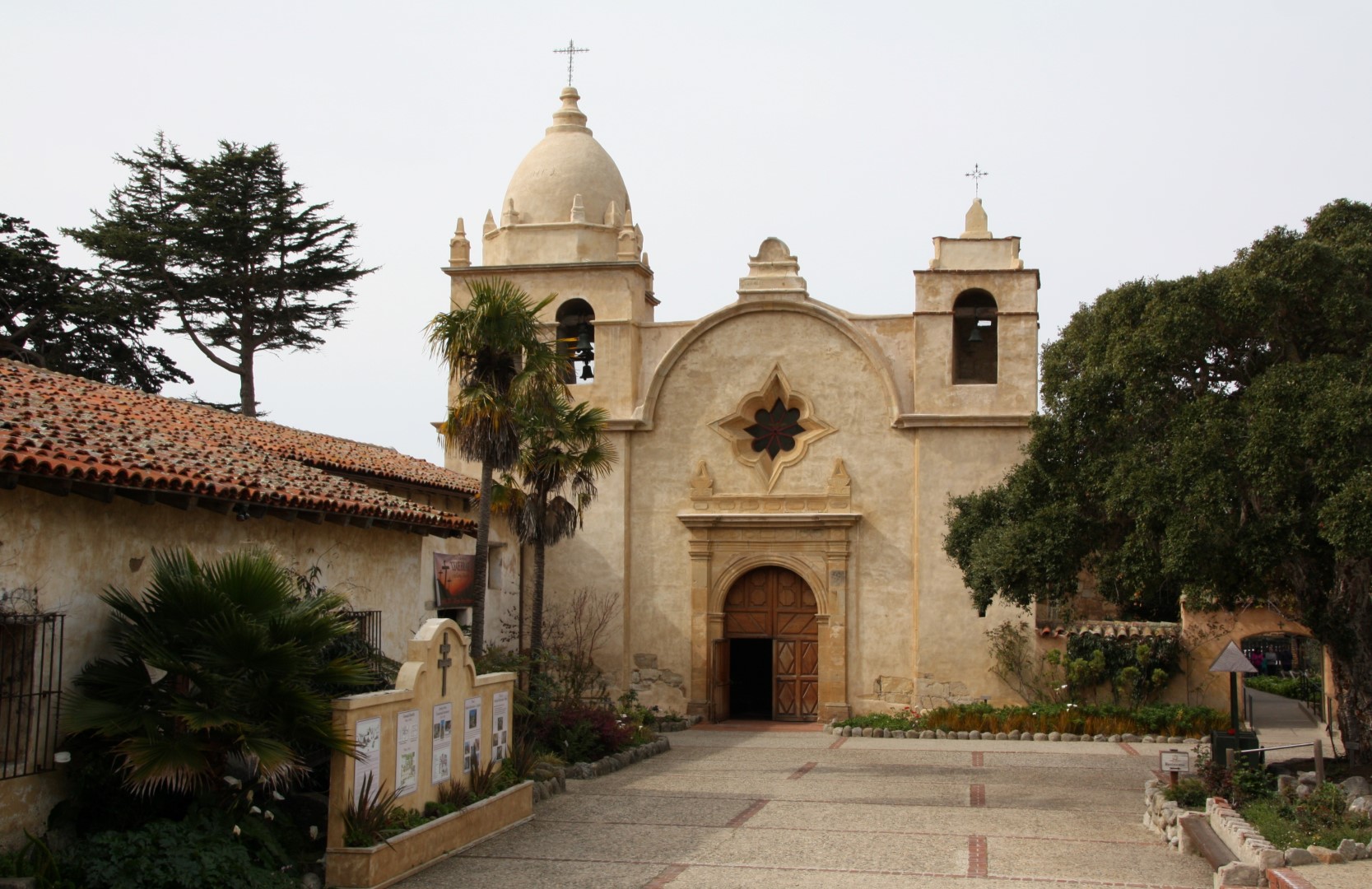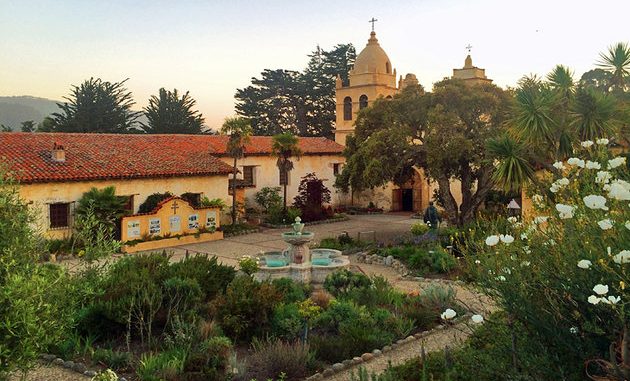
Echoes of Empire and Resilience: Unpacking the Enduring Legacy of Carmel Mission
Nestled amidst the whispering Monterey pines and the rhythmic sigh of the Pacific Ocean, where the quaint charm of Carmel-by-the-Sea meets the rugged beauty of the California coast, stands a structure that transcends mere architecture. Mission San Carlos Borromeo de Carmelo, more commonly known as Carmel Mission, is a captivating tapestry woven from faith and conquest, beauty and sorrow, preservation and ongoing debate. It is a place where the past isn’t merely remembered; it actively breathes, inviting visitors to grapple with a complex legacy that is as profound as it is contested.
From its sun-drenched courtyards to its intricately carved wooden doors, Carmel Mission is, at first glance, a vision of serene beauty. Its honey-colored adobe walls, gracefully arching bell tower, and lush, fragrant gardens speak of a bygone era, evoking a sense of peaceful contemplation. Yet, beneath this tranquil exterior lies a history fraught with the aspirations of empire, the zeal of evangelism, and the devastating impact of colonization on California’s indigenous peoples. To walk its hallowed grounds is to embark on a journey through four centuries, from the Spanish colonial ambitions of the 18th century to the modern-day quest for historical truth and reconciliation.
The Visionary and the Founding Stone

The story of Carmel Mission begins with a diminutive, yet indefatigable figure: Father Junípero Serra. A Spanish Franciscan friar, Serra arrived in Alta California in 1769, driven by an unwavering commitment to convert the native populations to Christianity and establish Spain’s dominion over the new frontier. After founding Mission San Diego de Alcalá, the first of California’s 21 missions, Serra journeyed north to Monterey Bay. On June 3, 1770, he established Mission San Carlos Borromeo de Monterey, near the presidio. However, finding the location too close to the military and lacking sufficient agricultural land, he soon relocated it a short distance south, to its current picturesque site in the Carmel Valley, on August 1, 1771.
This new location, blessed with fertile soil and a reliable water source from the Carmel River, became Serra’s spiritual headquarters. He designated it the caput et mater (head and mother) of the California missions, a testament to its central importance in his grand vision. It was here that he spent the remainder of his life, tirelessly working to build the mission system, baptizing thousands of Native Americans, and establishing a new socio-religious order. Serra died at Carmel Mission on August 28, 1784, and his tomb lies beneath the sanctuary floor, a focal point for pilgrims and visitors alike.
A Golden Age and Architectural Grandeur
Under Serra and his successors, Carmel Mission flourished, becoming a thriving agricultural and religious community. The indigenous Rumsen Ohlone people, who inhabited the area, were drawn, or in many cases, coerced, into the mission system. They were taught European farming techniques, various trades such as weaving, carpentry, and masonry, and, crucially, the tenets of the Catholic faith. The mission lands expanded, supporting vast herds of cattle, sheep, and horses, and yielding abundant crops of wheat, barley, and corn.
The original adobe structures, built by the hands of the missionized Native Americans, gradually gave way to more permanent and impressive constructions. The stone church, the centerpiece of the mission complex, was begun in 1793 and completed in 1797. Its unique architectural style, characterized by a Moorish-inspired bell tower and a parabolic arch ceiling, stands as a testament to the skill and artistry of its builders. This was a place designed to inspire awe and devotion, its grandeur reflecting the power and ambition of the Spanish Empire and the fervent faith of its Franciscan founders. The mission also housed various workshops, living quarters for the friars and Native Americans, a kitchen, a granary, and a cemetery where thousands of converts were buried.
Decline, Decay, and the Shadow of Abandonment
The mission’s golden age, however, was relatively brief. The early 19th century brought significant political upheaval. Mexico gained independence from Spain in 1821, leading to a shift in policy towards the missions. By the 1830s, the Mexican government began its process of secularization, transferring mission lands and properties from ecclesiastical control to private ownership or state administration. Carmel Mission, like its sister missions, was gradually stripped of its assets, its lands divided, and its indigenous population dispersed.
Without the Franciscan fathers to manage its affairs and with its workforce scattered, the mission fell into rapid decline. The adobe buildings, once vibrant centers of activity, crumbled under the relentless assault of weather and neglect. The stone church, though more resilient, suffered severe damage; its roof collapsed, and its interior was exposed to the elements. By the mid-19th century, when California became part of the United States, Carmel Mission was little more than a picturesque ruin, a haunting reminder of a vanished era, its grounds overgrown and its structures slowly melting back into the earth.

The Resurrector: Harry Downie’s Legacy
The resurrection of Carmel Mission from near-total ruin is largely attributed to the extraordinary dedication of one man: Harry Downie. A gifted carpenter and self-taught historian, Downie arrived in Carmel in the 1930s, commissioned by Bishop Philip Scher of Monterey to restore the dilapidated mission. What began as a job quickly transformed into a lifelong passion. For over 50 years, Downie meticulously researched, excavated, and rebuilt the mission, piece by painstaking piece.
"He wasn’t just a builder; he was an archaeologist of spirit, meticulously piecing together a lost world," observers often remark about Downie’s work. Eschewing modern materials and shortcuts, he insisted on using traditional methods and original plans whenever possible. He painstakingly recreated the intricate details of the church, from its unique ceiling to its carved wooden reredos, relying on fragments, old drawings, and an intuitive understanding of Spanish colonial architecture. Downie’s unwavering commitment to authenticity transformed the mission from a pile of rubble into the stunning historical landmark we see today. His efforts led to the mission’s designation as a Minor Basilica by Pope John XXIII in 1960, a testament to its spiritual and historical significance.
The Contested Legacy: Voices from the Past and Present
While Harry Downie’s restoration is celebrated as a triumph of preservation, the underlying history of the California missions, and Carmel Mission in particular, remains a subject of intense scrutiny and debate. For centuries, the missions were largely portrayed through a romanticized lens, as benevolent institutions that brought civilization and Christianity to "savage" peoples. Father Junípero Serra himself was canonized as a saint by Pope Francis in 2015, a recognition of his profound faith and missionary zeal.
However, a more critical and historically informed perspective has emerged, championed particularly by the descendants of the missionized Native Americans. This narrative acknowledges the devastating impact of the mission system on indigenous cultures, languages, and ways of life. The Ohlone, Rumsen, and other tribes brought into the missions suffered immense losses. They were subjected to forced labor, forbidden from speaking their native languages, and forced to abandon their traditional spiritual practices. Overcrowding, poor sanitation, and exposure to European diseases, against which they had no immunity, led to catastrophic population declines. The mission system, in this view, was a form of cultural and physical genocide, a brutal chapter in California’s colonial history.
"For us, the missions represent a profound trauma, a loss of identity, and the beginning of a long struggle for survival," states a common sentiment among contemporary Native American voices. "While we acknowledge the sincerity of faith, we cannot ignore the immense suffering that accompanied it." The debate surrounding Serra’s sainthood underscored this deep divide, with many Native American groups protesting the canonization, arguing that it glorified a figure responsible for immense harm.
Today, Carmel Mission attempts to navigate this complex terrain. While still an active Catholic parish and a site of pilgrimage, it also endeavors to present a more balanced historical narrative. Its museum exhibits, for instance, include artifacts and information that shed light on the lives of the Native Americans, acknowledging their rich pre-contact cultures and the hardships they endured. The mission’s beautiful grounds, while a place of peace for many, also contain the cemetery, a solemn reminder of the thousands of souls, both friar and indigenous, who lie buried there, their stories intertwined forever.
A Living Monument and a Call to Reflection
Carmel Mission today is more than just a historical site; it is a living monument to the intertwined histories of California. It attracts hundreds of thousands of visitors annually, from tourists seeking a glimpse of old California to Catholic pilgrims drawn by its spiritual significance. They wander through its beautiful gardens, admire its unique architecture, and explore its museums, which house a remarkable collection of artifacts, art, and documents from the mission era.
Yet, beyond the aesthetic appeal and historical exhibits, Carmel Mission serves a deeper purpose. It stands as a powerful symbol, prompting reflection on themes of faith, power, cultural clash, and resilience. It challenges visitors to confront the uncomfortable truths of history, to understand that beauty and pain can coexist in the same space, and that the past is never truly settled. As the ocean breeze rustles through the ancient trees and the bells chime, echoing across the valley, Carmel Mission whispers stories not just of triumph and devotion, but also of profound loss and the enduring spirit of those who lived and died within its walls. It remains a place of profound significance, demanding that we look beyond the surface, engage with its complexities, and continue the vital conversation about what it means to remember, to honor, and to reconcile.


